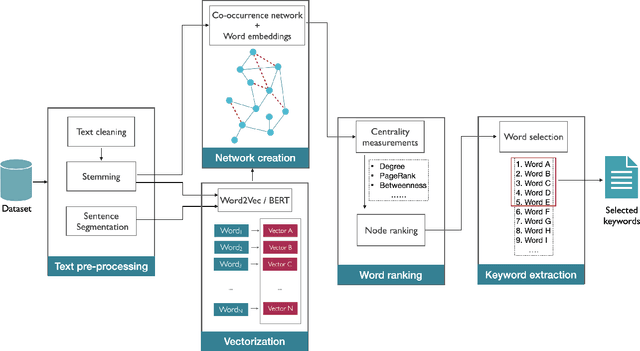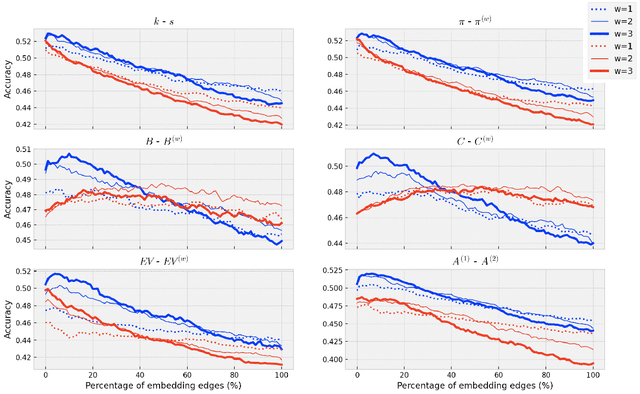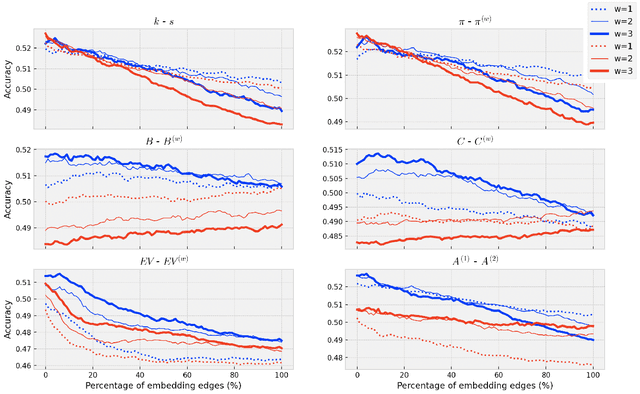Using virtual edges to extract keywords from texts modeled as complex networks
Paper and Code
May 04, 2022



Detecting keywords in texts is important for many text mining applications. Graph-based methods have been commonly used to automatically find the key concepts in texts, however, relevant information provided by embeddings has not been widely used to enrich the graph structure. Here we modeled texts co-occurrence networks, where nodes are words and edges are established either by contextual or semantical similarity. We compared two embedding approaches -- Word2vec and BERT -- to check whether edges created via word embeddings can improve the quality of the keyword extraction method. We found that, in fact, the use of virtual edges can improve the discriminability of co-occurrence networks. The best performance was obtained when we considered low percentages of addition of virtual (embedding) edges. A comparative analysis of structural and dynamical network metrics revealed the degree, PageRank, and accessibility are the metrics displaying the best performance in the model enriched with virtual edges.
 Add to Chrome
Add to Chrome Add to Firefox
Add to Firefox Add to Edge
Add to Edge